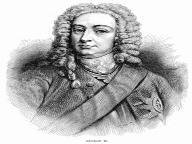Quiz Answer Key and Fun Facts
1. George I was the first Hanoverian king. At the time of his accession in 1714, he was already divorced from his wife, Princess Sophia Dorothea of Celle. However, he had previously been suggested as a possible husband for whom?
2. George's marriage to his first cousin, Sophia Dorothea, was by no means happy. How many children did the couple produce before divorcing in 1694?
3. George II became King of Great Britain and Ireland in 1727. He also became Elector of Hanover, and prior to his accession had been Prince of Wales. But what English title had Queen Anne conferred upon him in 1706?
4. George II's wife, whom he had married in 1705, was the pretty and intelligent Princess Caroline of Brandenburg-Ansbach, but what was her actual first name?
5. How many children did Caroline present her husband George with?
6. Who did Frederick, Prince of Wales marry in 1736?
7. Queen Caroline died in 1737, but King George II soldiered on for how many more years?
8. As a young man, George III had been in love with Lady Sarah Lennox. Who was her father?
9. George III, unlike his Hanoverian (and indeed his Stuart) predecessors, was enduringly faithful to Queen Charlotte throughout their fifty-seven year marriage. In return, she presented him with fifteen children, the eldest of whom was born on what day in 1762?
10. George III's brother, Prince Henry, Duke of Cumberland, made what was considered an unsuitable marriage. Who was his bride?
11. Most people know that George III's youngest sister, Caroline Matilda, married Christian VII of Denmark (the son of her Aunt Louise) and was divorced by him for adultery with Count Struensee, but who did George's elder sister, Augusta, marry?
12. George III's second son, Frederick, was forced to resign as Commander-in-Chief of the army because his mistress was selling military secrets. What was her name?
13. The King's daughters led what they considered a miserable life. Devoted to them, the King kept them as close to him as he could. After his attack of madness in 1788, he became even more reluctant to part with them, and Queen Charlotte agreed. Which three daughters did the King fondly refer to as his 'three Cordelias'?
14. Whom did Prince Augustus, Duke of Sussex, marry in 1793?
15. In what year did Princess Sophia give birth to an illegitimate son?
16. The ill-fated marriage of the Prince and Princess of Wales produced only one child, born in 1796. What was the girl's name?
17. It was the death of which of his children that finally plunged George III into the madness from which he was never to emerge?
18. Princess Charlotte of Wales was eventually married to whom in 1816?
19. Whom did the Duke of Cambridge marry in 1818?
20. Which couple - the Clarences, the Kents, the Cumberlands and the Cambridges - won the race to give George III a legitimate grandchild?
Source: Author
LiamR
This quiz was reviewed by FunTrivia editor
bloomsby before going online.
Any errors found in FunTrivia content are routinely corrected through our feedback system.

